I'll start with an image:

Above image presents text achieved in two different ways, both used the same type of font - Arial, bold, size 11.
The one at the bottom was created in image editing program, and the one at the top in my OpenGL application. To be more precise, using FTExtrudeFont from FTGL library:
font_ptr font(new FTExtrudeFont(filename.c_str()));
My question is, why is it drawn like this? I assume the reason for this might be different resizing algorithms, but if so, how can I achieve this better-looking font (the bottom one) in my OpenGL application?
EDIT:
To render a font, I do only call this one function:
font->Render(text, // Text to be displayed
-1, // Line length, which by default is left as -1
pos); // Position in which to draw text